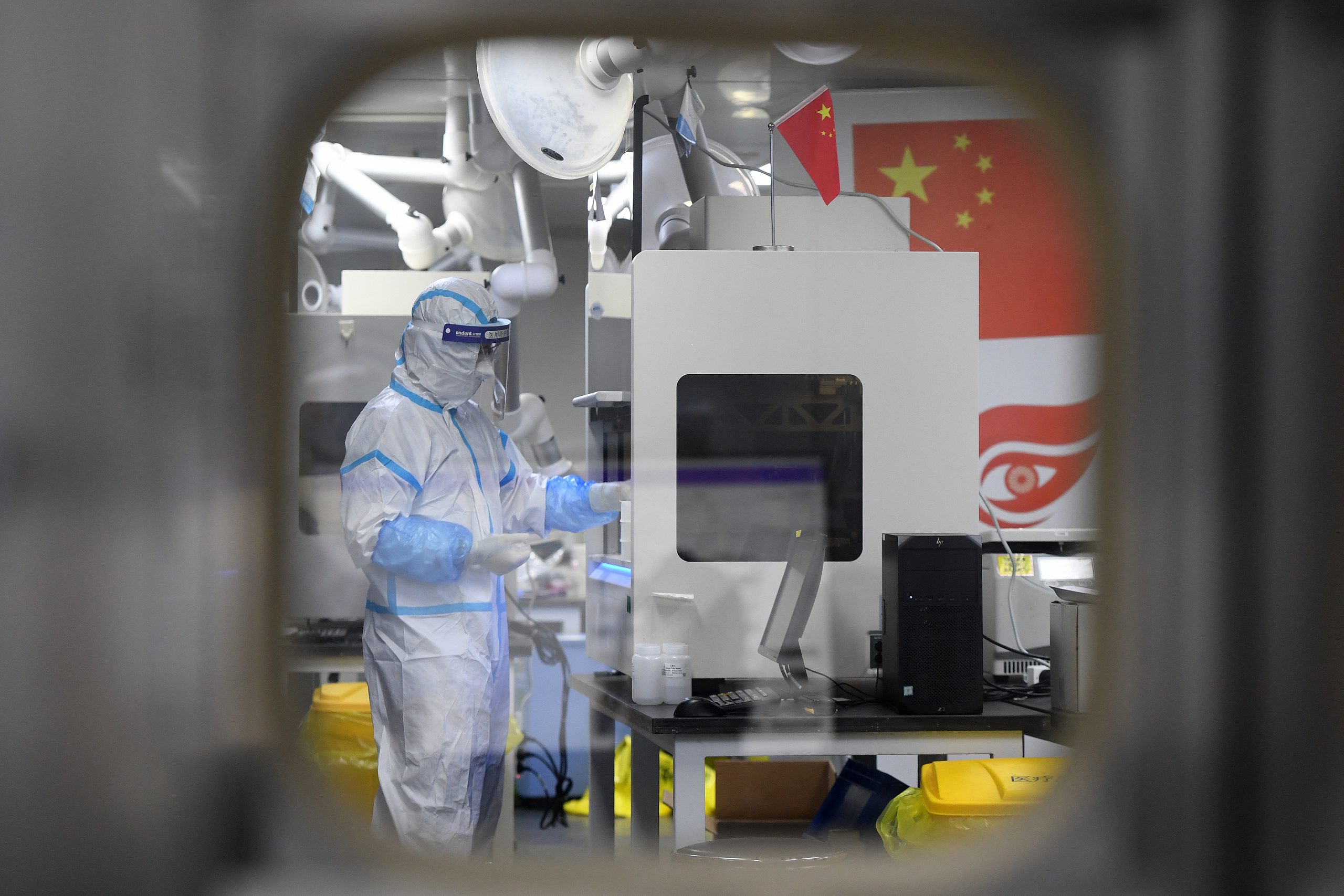Three years after the COVID-19 outbreak first wreaked havoc upon the world, its origins remain a stubborn mystery.
That quandary recently was dealt a new twist when the Department of Energy, which oversees a network of national labs, shifted from being undecided to a “low confidence” conclusion about the origins of the respiratory illness. The department concluded the virus most likely originated from a lab leak rather than natural transmission spillover.
TOP VIROLOGISTS WHO CHANGED TUNE ON COVID-19 LAB LEAK THEORY RECEIVED MILLIONS IN NIH GRANTS
Beyond the science, significant geopolitical issues are at play. A U.S. government stamp of approval on the lab leak theory, even if it’s not a consensus view among experts, could further roil U.S.-Chinese relations at a time of heightened tensions between the superpowers.
COVID-19 and its variants have led to the deaths of 8.6 million people globally and 1.1 million people in the United States while impelling trillions of dollars’ worth of economic damage.
And some experts say the origins of the virus may never be known.

“It’s important to emphasize that this is a low-confidence assessment. Translating that into everyday language, that sounds like a coin flip to me,” Dr. William Schaffner, a professor of infectious diseases at Vanderbilt University Medical Center, told the Washington Examiner about the DOE conclusion. “We ought to recognize that this is basically an unresolved issue and may forever remain unresolved.”
Under the Office of the Director of National Intelligence’s definition, “low confidence” indicates “that the information used in the analysis is scant, questionable, fragmented, or that solid analytical conclusion cannot be inferred from the information, or that the [intelligence community] has significant concerns or problems with the information sources.”
The DOE lab leak conclusion is similar to one reached by the FBI.
“The FBI has for quite some time now assessed that the origins of the pandemic are most likely a potential lab incident in [central China’s] Wuhan,” FBI Director Christopher Wray said in a Feb. 28 interview with Fox News.
But neither that assertion nor the DOE revelations have prompted other agencies to revise their assessments.
That’s still a minority position within the intelligence community. Four other agencies and a national intelligence panel favor natural transmission, while two are undecided, per the Wall Street Journal. The lab leak hypothesis is also a minority view in domestic medical academia, according to Schaffner and Dr. Michael Osterholm, director of the University of Minnesota’s Center for Infectious Disease Research and Policy.
Nonetheless, the disclosure has breathed new life into the impassioned debate over the birth of one of the worst global pandemics in a century as Congress gears up to scrutinize the matter further. It has also ripped open an old wound about scientific gatekeeping in public discourse and amplified distrust in experts.
In the earlier days of the pandemic, a deluge of media outlets and doctors scoffed at the lab leak hypothesis, dismissing it as a conspiracy. Headlines were often along the lines of “The Wuhan Lab Leak Hypothesis Is A Conspiracy Theory, Not Science” and “The Lab-Leak Hypothesis Made It Harder for Scientists to Seek the Truth.”
Underlying many of those put-downs were offshoot lab leak hypotheses mixed into the discourse that the infectious COVID-19 virus was engineered in a lab and intentionally unleashed upon the world. Neither DOE nor the FBI favors that type of conjecture.
“There’s no evidence whatsoever. Across the board, all of the coronavirus and virology experts would tell you that,” Osterholm stressed, explaining that there are no molecular footprints in the virus to indicate it was engineered. “Once we understood about the different construction of the virus itself — there’s no evidence that it is a man-made virus, none whatsoever.”
The lab leak hypothesis being debated posits that a virus being studied at the Wuhan Institute of Virology or a similar facility unintentionally leaked. The Wuhan lab is located not far from where the virus was first publicly detected and has been home to scientists studying bats and coronaviruses. Furthermore, some intelligence suggests that three researchers at the Wuhan lab fell ill around November 2019 with symptoms eerily similar to COVID-19.
Favored explanations initially postulated that COVID-19 jumped species from a bat or some species, possibly at a wet market near Wuhan. However, such a species has yet to be credibly identified.
“We have so much precedents for the transfer of viruses from the wild environment in other mammals to humans, not only the two coronaviruses but a whole array of other virus classes,” Schaffner said, referencing the severe acute respiratory syndrome, or SARS, and Middle East respiratory syndrome, or MERS, outbreaks.
Wuhan, where the illness was first detected, is a metropolitan area with a population of about 8.7 million. However, it may not have been the area where it first emerged, according to Osterholm.
“It’s a major transportation hub and it has a lab capacity to find it,” he said.
CLICK HERE TO READ MORE FROM THE WASHINGTON EXAMINER
Congress is likely to learn more about DOE’s conclusion during the March 8 and 9 annual worldwide threats briefing. Both Schaffner and Osterholm insist they are keeping open minds about COVID-19’s roots and have underscored that China has obfuscated its investigation.
“We can spend all the time we want debating this when, in fact, what we ought to be emphasizing both sources for the future could be very critical,” Osterholm warned. “What are we doing to deal with reducing the potential for a lab leak, or what are we doing to deal with our preparedness for a spillover? And I think that’s what’s really missing right now.”





